
Nymphenburg Manufactory: A History of Porcelain Production
Nymphenburg Porcelain Manufactory in Bavaria is one of the oldest porcelain production factories in Europe. It was founded in Munich in 1747 and continues to operate to this day. One of the distinctive features of the Nymphenburg Manufactory is the preserved manual production of tableware, vases, and figurines. Another secret to its success is the vibrant and rich palette of colors produced in-house. Masters apply them by hand using underglaze techniques. In the factory's laboratory, they can create 50,000 pigment combinations, turning painted items into exquisite works of art.
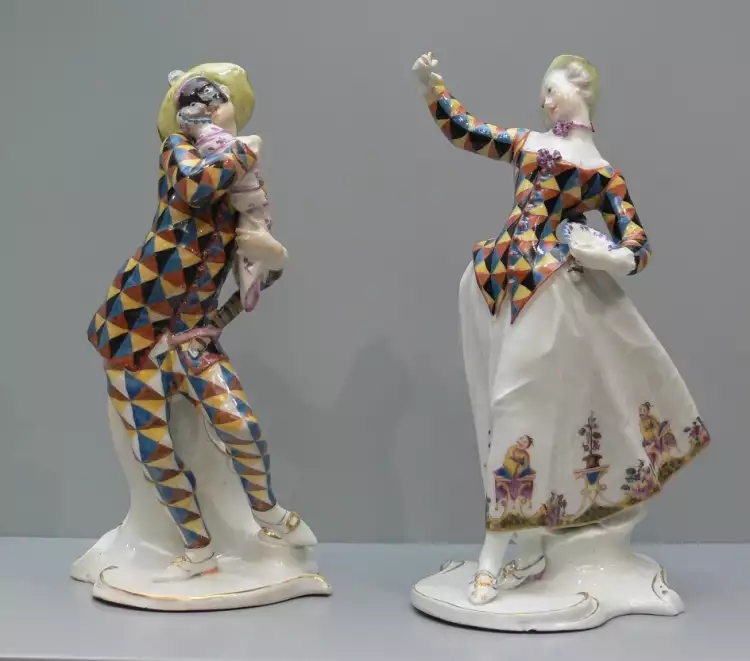 Nymphenburg manufactory. Statuettes with Commedia dell'arte characters, 1760
Nymphenburg manufactory. Statuettes with Commedia dell'arte characters, 1760
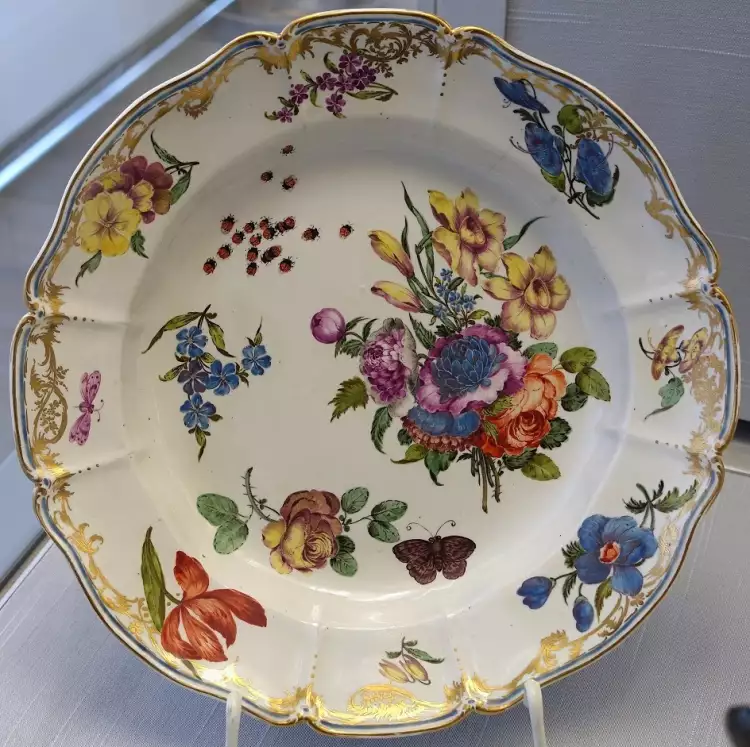 Nymphenburg manufactory. Plate with flowers, butterflies and ladybirds, 1760
Nymphenburg manufactory. Plate with flowers, butterflies and ladybirds, 1760
The History of Nymphenburg Porcelain Production in the 18th and 19th Centuries
The Nymphenburg Manufactory began its operations with the support of the House of Wittelsbach. Elector of Bavaria Maximilian III played a role in establishing new manufacturing to strengthen the economy. The factory, equipped with molding workshops and artistic studios, was founded on November 11, 1747. Several more years were dedicated to perfecting production processes and preparing the initial models because the owners were determined to create the highest quality porcelain. Professional sculptors and artists were brought in for collaboration from the very beginning.
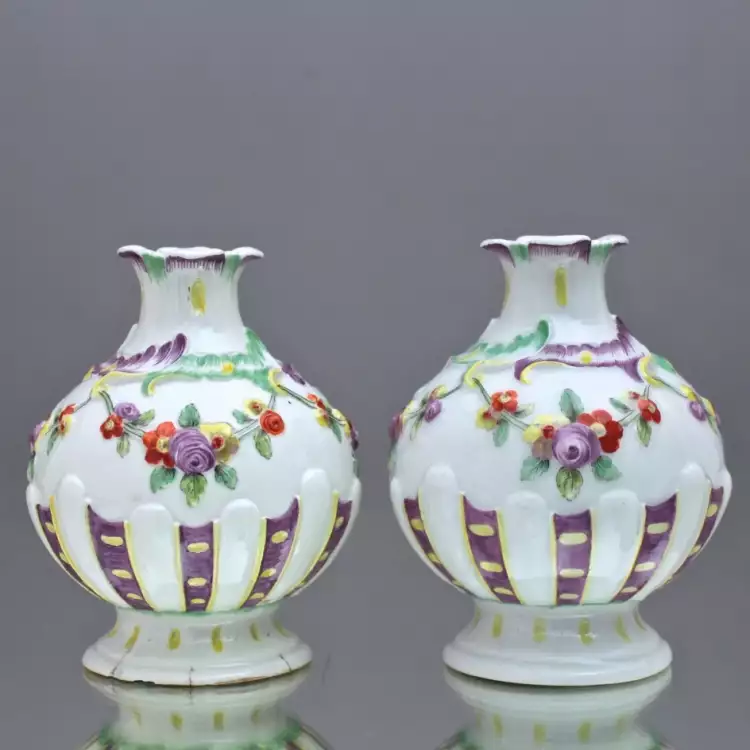 Nymphenburg manufactory. Rococo vases, circa 1760
Nymphenburg manufactory. Rococo vases, circa 1760
The Nymphenburg Manufactory invited sculptor Francesco Antonio Bustelli, who worked in the Rococo style. He created a series of porcelain figurines featuring characters from the Italian Commedia dell'arte. Colored porcelain production began regularly in 1756, and soon the enterprise became commercially successful. After Bustelli, another renowned sculptor, Dominikus Aulicheck, who crafted about a hundred figurine models, took over. He was succeeded by Johann Peter Melchior. By the end of the 18th century, King Ludwig I of Bavaria became an important patron for the factory.
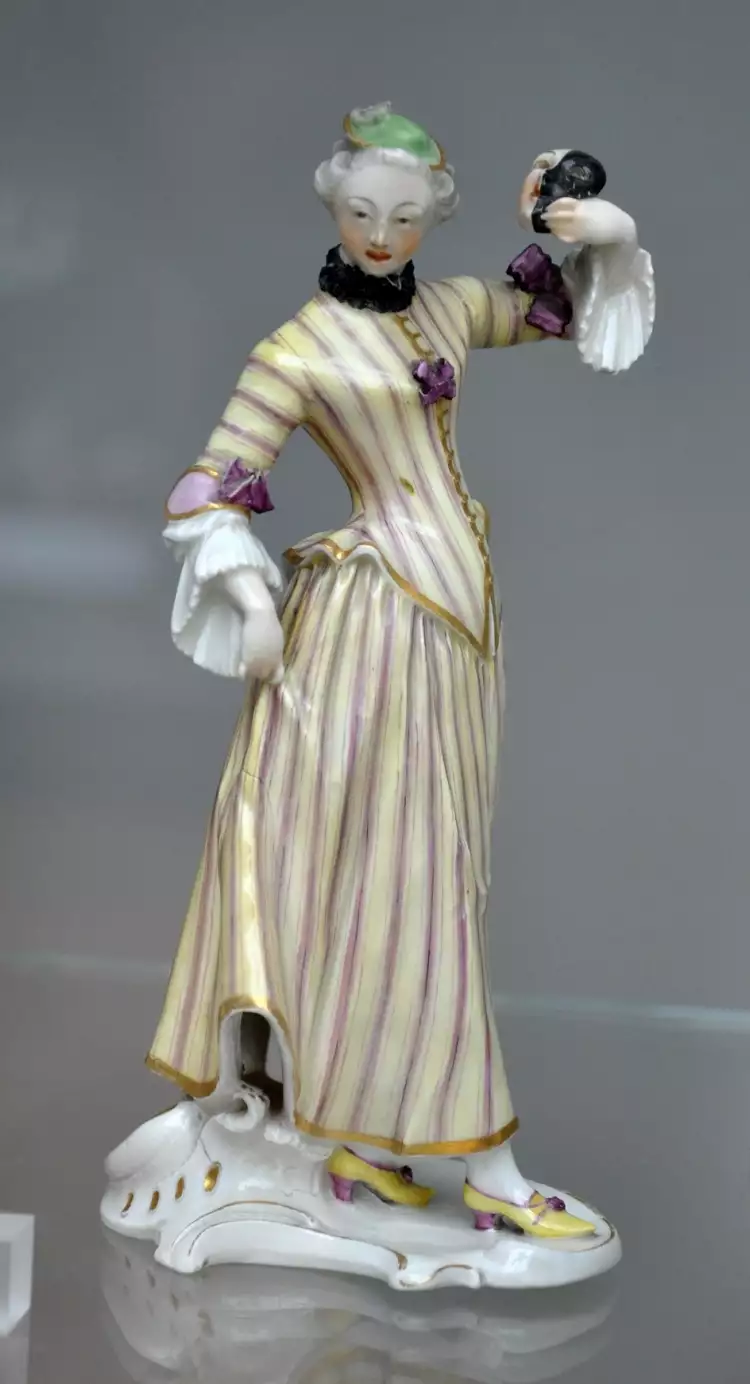 Nymphenburg manufactory. Franz Anton Bustelli. Columbine, 1765
Nymphenburg manufactory. Franz Anton Bustelli. Columbine, 1765
By the mid-19th century, the times of prosperity gave way to a deep economic crisis. The Manufactory was privatized and was forced to switch to technical and medical porcelain instead of artistic porcelain. Gradually, tableware also returned to the assortment, with orders coming from monasteries, hotels, hospitals, and military units.
Nymphenburg Manufactory in the 20th Century and Today
In the early 20th century, merchant Albert Bäuml took over the production, hoping to revive 18th-century German porcelain art. He assembled a collection of antique items, starting with Bustelli figurines, and initiated their reproduction. The entrepreneur also invited new artists who created elegant tableware in the Art Nouveau style. Animal figurines created during this period by masters Theodor Körner and Willy Zügel are highly valued. Nymphenburg Manufactory found customers among aristocrats, embassies, churches, and palaces in various countries.
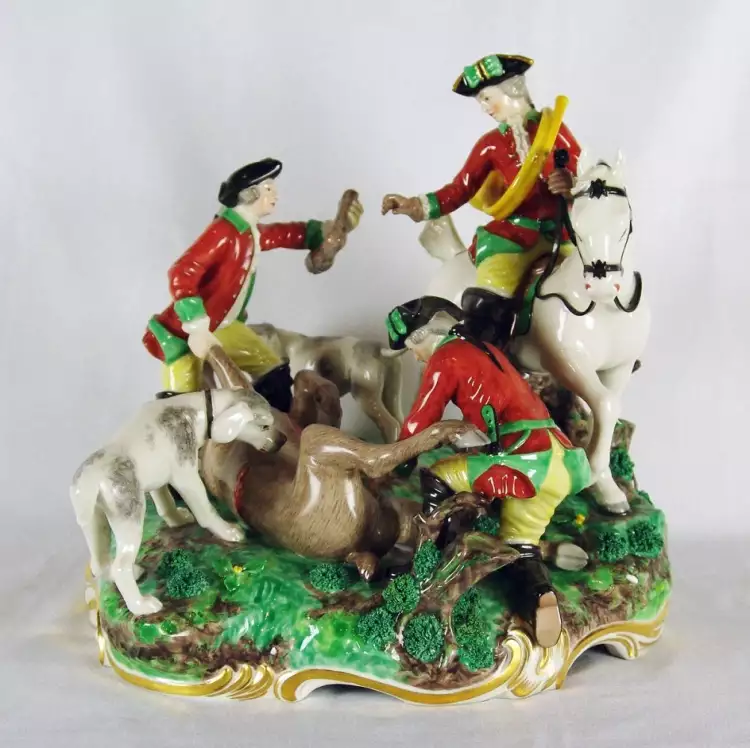 Nymphenburg manufactory. Statuette Stag Hunt, early 20th century
Nymphenburg manufactory. Statuette Stag Hunt, early 20th century
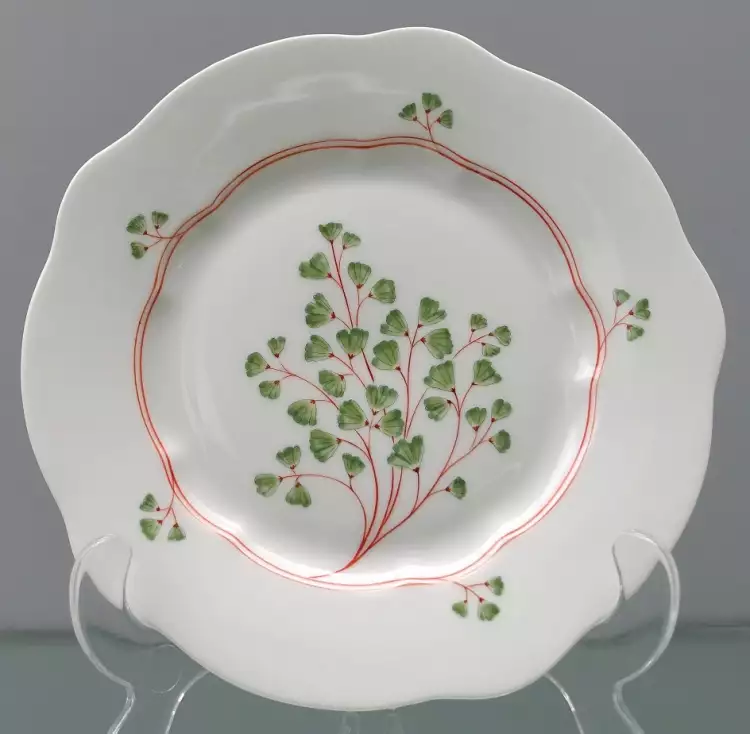 Nymphenburg manufactory. Plate with design by Max Rossbach and Hermann Gradl, 1900–1902
Nymphenburg manufactory. Plate with design by Max Rossbach and Hermann Gradl, 1900–1902
During World War II, the factory was used for military purposes and became a target for bombings. It was destroyed, but the most valuable models, molds, and samples of antique porcelain survived in the basements. After the war, the Bäuml family resumed production.
Today, the factory is owned by Prince Luitpold of Bavaria. Like in the past, the manufactory collaborates with renowned designers from Europe and America. Here are some artists who worked at Nymphenburg in the 21st century:
- Konstantin Grcic.
- Hella Jongerius.
- Kiki Smith.
- Joep van Lieshout.
- Olaf Nicolai.
- Carsten Höller.
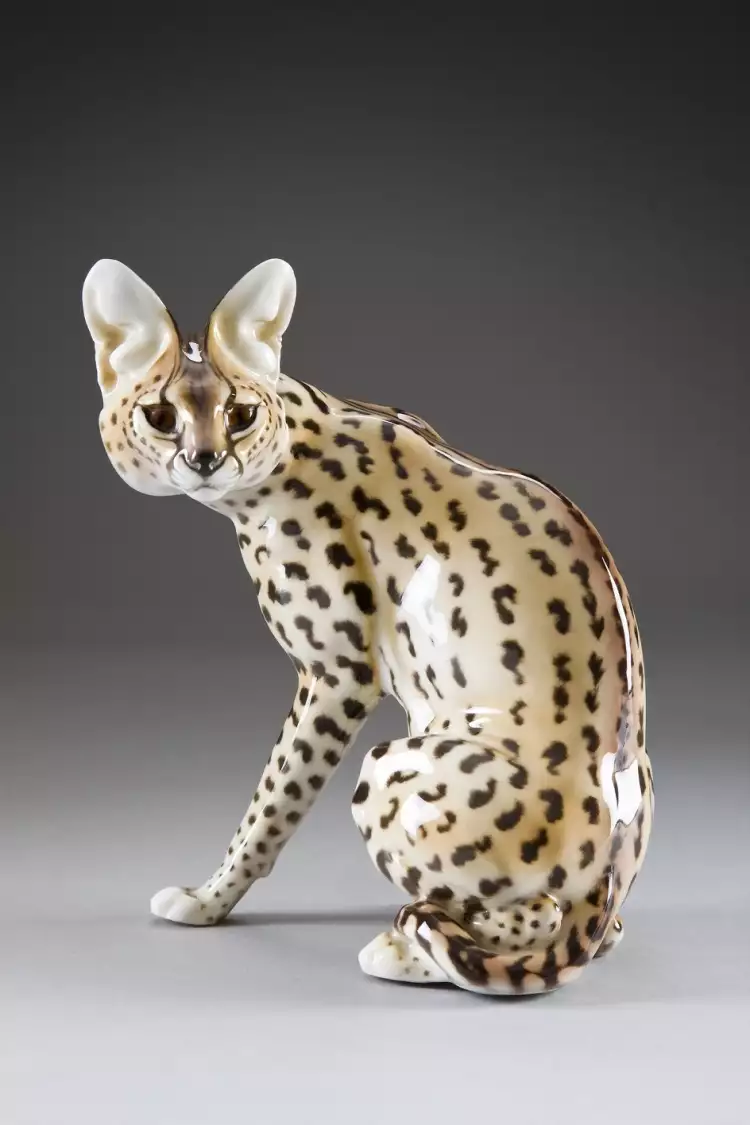 Nymphenburg manufactory. Serval, circa 1910
Nymphenburg manufactory. Serval, circa 1910
Nymphenburg porcelain is highly regarded among collectors. If you belong to their ranks, you will find many interesting items on the Very Important Lot website! We regularly hold auctions where you can acquire rare antiques and works of art.
 Edward Munch—the creator of nightmares and the singer of anxiety
Edward Munch—the creator of nightmares and the singer of anxiety  Still life is a genre of painting that perfectly reflects the artist's inner universe
Still life is a genre of painting that perfectly reflects the artist's inner universe 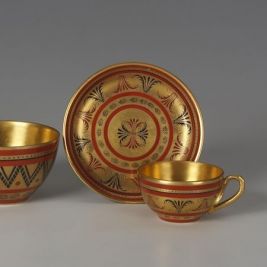 Kuznetsov porcelain
Kuznetsov porcelain 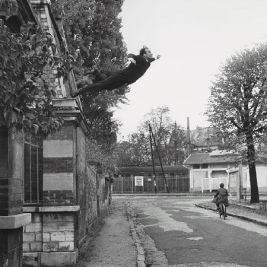 Performance art - provocative art with profound meaning
Performance art - provocative art with profound meaning  The painting "The Burning of the Houses of Lords and Commons" by William Turner is a dramatic depiction of a historical event
The painting "The Burning of the Houses of Lords and Commons" by William Turner is a dramatic depiction of a historical event  William Turner—the greatest British artist of all time
William Turner—the greatest British artist of all time  Silver of Great Britain - History, Styles, and Hallmarks
Silver of Great Britain - History, Styles, and Hallmarks  Carl Fabergé - a Russian jeweler known throughout the world
Carl Fabergé - a Russian jeweler known throughout the world  Fashion Photography - the Dazzling World of Fashion, Models, and Glossy Magazines
Fashion Photography - the Dazzling World of Fashion, Models, and Glossy Magazines 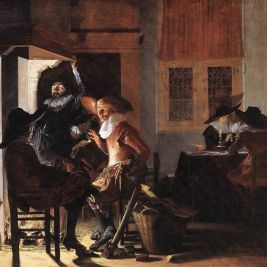 Golden Age of Dutch painting - an era that gave the world the finest masterpieces of Dutch art of all times
Golden Age of Dutch painting - an era that gave the world the finest masterpieces of Dutch art of all times